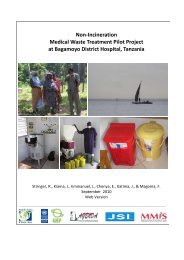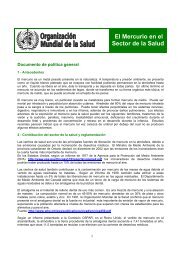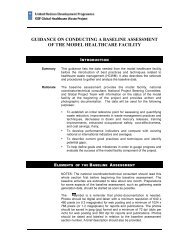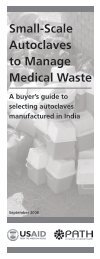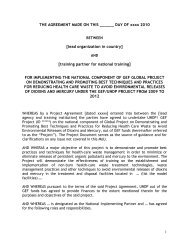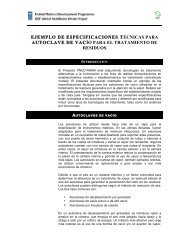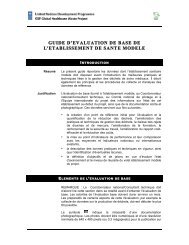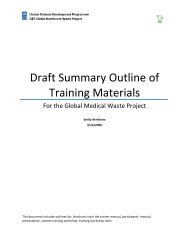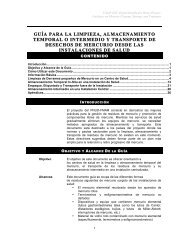Latvia
Latvia
Latvia
Create successful ePaper yourself
Turn your PDF publications into a flip-book with our unique Google optimized e-Paper software.
Health systems in transition<br />
<strong>Latvia</strong><br />
Figure 5.10 shows numbers of dentists per population in the WHO European<br />
Region. The number of dentists in <strong>Latvia</strong> has increased significantly since the<br />
early 1990s, and in 2005 there were 63 dentists per 100 000 population, which<br />
is higher than the EU average (61 dentists per 100 000 population) (WHO<br />
Regional Office for Europe 2007a).<br />
In 2005, there were 1485 pharmacists and 1613 pharmacists’ assistants in<br />
<strong>Latvia</strong>. The number of pharmacists is roughly constant, and is considered to be<br />
sufficient to meet the country’s needs at the time of writing (HSMTSA database<br />
2007 [unpublished data]).<br />
Planning health care personnel<br />
The HSMTSA maintains a register of all doctors, nurses, midwives, doctors’<br />
assistants and dentists. The legal basis for registration was established in<br />
October 2005 by “Regulations of the Cabinet of Ministers on Establishment,<br />
Fulfilment and Maintenance of the Medical Persons Register”, which stipulate<br />
that all health sector workers should report to the Register within one month<br />
following initiation of their health care provision activities.<br />
Demand for health care personnel, including doctors, is analysed by the<br />
Medical Professional Education Centre (a public body under supervision of<br />
the Ministry of Health). In accordance with the statutes of this Centre, which<br />
have been approved by Regulations of the Cabinet of Ministers “Concept<br />
Paper on Human Resources in Health Care” (in force since February 2005),<br />
it is responsible for planning and organizing further education, including<br />
specialization of medical professionals, as well as fulfilment of professional<br />
qualifications. The distribution of residents is also the responsibility of this Centre.<br />
Professional associations deal with the training and planning of their<br />
respective specializations. There is no agency at state level that is involved in<br />
planning and organization of training for chief doctors, directors of hospitals,<br />
heads of health care institutions or high-level specialists. This function is<br />
undertaken partly by the Association of Management Experts of Health Care,<br />
a public organization that does not engage in planning, but rather is involved<br />
in organizing particular courses that can be pursued by its members for the<br />
purpose of improving their managerial capabilities. Courses are offered by<br />
the Stradins University Postgraduate Training Faculty, as well as the Faculty<br />
of Management at the Riga International College of Economics and Business<br />
Administration. These courses are financed privately.<br />
Local governments are more directly involved in planning of the number of<br />
chiefs or directors of health care institutions under their ownership and within<br />
their own territories.<br />
151





